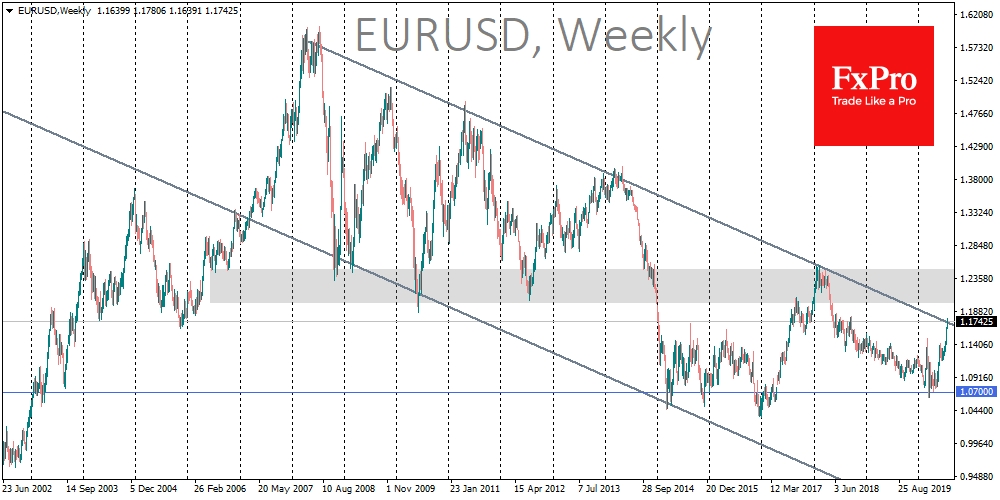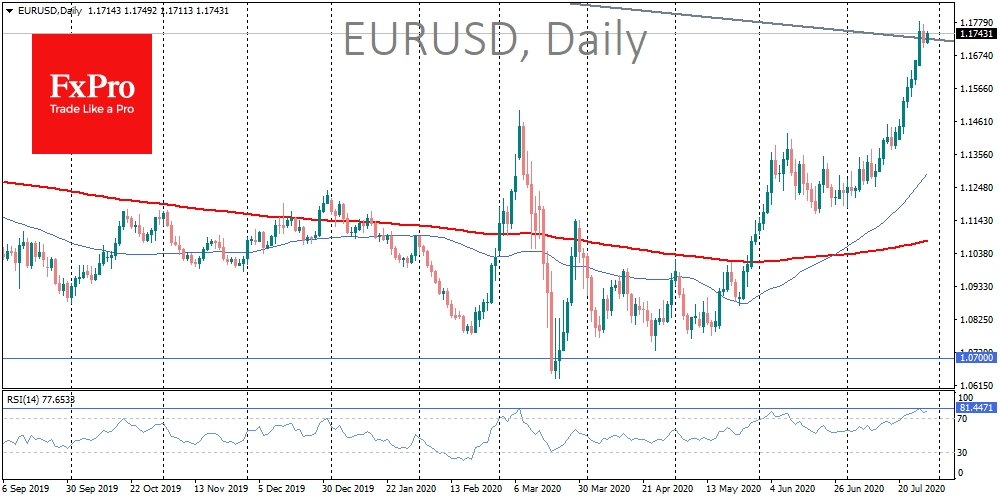Today, Federal Reserve releases the results of its two-day monetary policy meeting, with Chairman Powell delivering a press conference 30 minutes afterwards. No changes in the rate or stimulus programs are expected. However, it will be a crucial meeting for the markets.
Investors and traders will be closely watching how the Fed's assessment of the prospects for economic recovery will change. In June, when the committee published its quarterly forecasts, there were hopes for a gradual recovery. However, after that, the number of new infections spiked to more than twice the number of lockdown highs in April. As a result, the lifting of the restrictions has stalled and, in some cases, has been tightened again. All this promises to add uncertainty to the forecasts or their reduction.
The debt markets pay just as much attention to this event. In recent days there has been more talk of the dollar losing its "exorbitant privilege". Since the 1960s, this term has been used to describe the advantages for the US dollar's status as the world's reserve currency. This status has helped to confer lower rates to US bonds than those of competing economies for years and to meet high demand and first-class liquidity consistently. Right now, yields on US government securities are higher than in many European countries, as well as Japan. This is alarming because the US needs to borrow trillions of dollars from the capital markets. It is in the Fed's power to support bond prices, thereby reducing yields and debt service costs.
Perhaps the most interest still concerns the dynamics of the dollar. Since the beginning of July, it has been showing an almost daily decline against its main competitors. On the long-term charts, EUR/USD has been approaching the resistance level of the downtrend since 2011. A steady increase above the current levels (1.1750-1.1800) may become a signal of the start of a longer-term extension, as it was in the period from 2000 to 2008.

Without the Fed's attention to the topic of the dollar weakening, momentum in EUR/USD may take it to 1.2000 in August and to 1.2500 by the end of the year. It is hard to take the discussion seriously that this is beneficial for American companies. After all, the US is a net importer with a large trade deficit. A steady decline in the dollar could quickly turn into pressure on the US debt markets, which would put the government in a challenging position.
If the Fed speaks about this, then Chairman Powell will try to convince the world of stability at the press conference. Combined with the intense selling of the US currency in the last few weeks, this could lead to a confident retracement of the dollar to 1.1000. This scenario is seen as being the most likely, as it will allow the US Treasury to buy time for new rounds of borrowing.
It is unlikely that the EUR/USD to return to, or below, 1.07 unless there is a repeat of March's markets disaster when demand for dollars swept away everything in its path.
Which stock should you buy in your very next trade?
With valuations skyrocketing in 2024, many investors are uneasy putting more money into stocks. Unsure where to invest next? Get access to our proven portfolios and discover high-potential opportunities.
In 2024 alone, ProPicks AI identified 2 stocks that surged over 150%, 4 additional stocks that leaped over 30%, and 3 more that climbed over 25%. That's an impressive track record.
With portfolios tailored for Dow stocks, S&P stocks, Tech stocks, and Mid Cap stocks, you can explore various wealth-building strategies.
